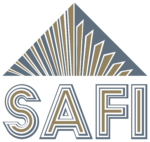
GSE SOFTWARE
The GSE General Structural Engineering software is a fully integrated analysis and design software for structural engineering. The software accounts for steel, cold-formed steel, concrete, automated slab design, timber, light frame wood and aluminum.This engineering software solution is used worldwide by several notable international companies in production work for building innovative structures.The GSE software is an advanced structural program based on more than 33 years of Research and Development.
FULLY INTEGRATED
SAFI is truly integrated into one environment allowing users to solve their analysis, design and engineering challenges more efficiently.
OUTSTANDING SUPPORT
Our technical team consists of experienced structural engineers providing relevant and effective support.
POWERFUL FEATURES
Our continuous R&D efforts are driven to produce a technology that ensures better productivity to achieve simple and complex structural projects.
INTERPRETATION OF THE CODES
SAFI is a specialized technology tailored to enhance our user’s understanding of the interpretation and application of the various codes supported.
ADVANCED ANALYSIS FEATURES
The General Structural Engineering software is a technology built on a powerful user-friendly interface offering comprehensive analysis options and intuitive modeling features.
The advanced structural analysis of the GSE software allows the user to achieve specialized analyses crucial to any projects related to the construction industry.
FEA Finite Elements Analysis
Static Analysis
Linear and Nonlinear Analysis
P-Delta Analysis
Natural Frequency Analysis
Static Equivalent
Seismic and Dynamic Analysis
Time-History Analysis
Modal Analysis
Spatial Objects and Spatial Loads
Buckling Analysis
Spectral Analysis
Advanced Section Stress
Torsion and Warping
Built Up Sections
Catenary Cables
Diaphragm Analysis
Notional Horizontal Loads
Loads and Load Combinations
SIESMIC AND DYNAMIC ANALYSIS
Automated simplified method of the building codes (NBCC and IBC)
Seismic response spectrum, seismic time-history and dynamic time-history analysis
Customized response spectrums and accelerograms
Fully customizable analysis parameters
Maximal response using CQC and SRSS methods
Automated or user defined damping
Graphical display of response spectrums and accelerograms
User defined incidence angle of seismic loads and vertical components
Customized analysis and output time steps
Time refined results can be provided for selected parts of the models
Automated or custom determination of the signs of deformations provided by the maximum response methods
Additional masses can be added to the model by way of static loads
Seismic loads (spectrum or accelerogram) and dynamic loads (sinusoidal, general load functions and random load functions)
Multiple seismic and dynamic loads can be combined together in a single analysis
Base shear calibration according to the selected building code
Possibility to define several seismic loads and account for eccentricities between the center of stiffness and the center of mass
Graphical display of the center of stiffness and the center of mass and seismic forces at floors
Account for accidental eccentricities
Account for the I, F and R coefficients of the NBCC and IBC code in spectral and time-history analysis
SPATIAL OBJECTS AND SPATIAL LOADS
Spatial objects are used to model non-structural secondary elements attached to the structure. These elements add no stiffness to the existing model. Loads applied to spatial objects are transferred to the structure through one or more attach joints. The loads are transferred using a “rigid plate” approach. Concentrated, pressure and wind loads may be applied to spatial objects. The figures below shows a spatial object loaded vertically and horizontally attached to a cantilever column. Also, it shows the deformations and biaxial moments induced by the loads transferred by the spatial object.
CATENARY CABLES
The catenary cable element is a highly non-linear element used to model the catenary behavior of a cable suspended between two points under the effect of its self-weight. This formulation accounts for the non-linearity due to large displacements.
A cable has no bending, shear, compression or torsion stiffness. Due to this fact, the fixities at the ends are ignored; the cable is always treated as member acting in tension only.
In the interface of the GSE, the user can create a catenary cable by associating a cable type section to a member.
Direct Analysis Method (DAM) available for AISC 360-16 and AISC 360-10 standards. The options for the Stability Design Method are Direct Analysis Method (DAM) and Effective Length Method (kL).
TORSION AND WARPING
The GSE software considers restrained warping for the torsion of thin-wall open sections. Notice that this phenomenon is not included in most commonly used frame analysis programs. Almost all frame programs in practice use St-Venant torsion theory ignoring the effects of restrained warping.
LOADS AND LOAD COMBINATIONS
The software allows the user to create load combinations.
A load combination results in an algebric combination of distinct basic loads.
Each basic load is multiplied by a load factor. The resulting load combination acts on the structure to generate a specific structural response.
The load combination wizard in the program also allows creating load patterns.
The load combination wizard generates load combinations according to NBCC, UBC, ASCE 7, BOCA, Eurocode and ECC.
Loading for joints, members including concentrated, uniform, trapezoidal and thermal loads.
Pressure or concentrated floor loads with two-way, one-way and truss distribution using triangular or quadrilateral surfaces.
Pressure or concentrated loads on finite element plates.
Gravity loads in any global direction calculated by the program.
Imposed displacements at any joint.
User defined load combinations.
GSE SOFTWARE
3D STRUCTURAL
ANALYSIS AND DESIGN
APPLICATIONS
Structural Steel
Cold-Formed Steel
Structural Concrete
Concrete Slab and Foundation Design
Timber
Light Framed Wood
Aluminum Structures
STANDARDS
American AISC 360-16 LRFD
American AISC 360-16 ASD
American AISI S100-16
Canadian CSA S136-16
Canadian CSA S16-14
Eurocode 3 and Eurocode 4
Indian IS 800-2017
Canadian A23.3-04, A23.3-14
American ACI 318-02
European EC2-2004
Egyptian ECCS 203-2001
Canadian CSA 086-14 (r2017)
Aluminum AA ADM-2015 (LRFD)
Aluminum AA ADM-2015 (ASD)
Aluminum CSA CAN S157
PSE SOFTWARE
OFFSHORE STRUCTURAL
ANALYSIS AND DESIGN
APPLICATIONS
Offshore and Onshore Structures
Structural Finite Element Analysis
P-Delta Analysis
Nonlinear Structural Analysis
Automated Wind Wall Calculation
Automated Calculation of Member Unbraced Lengths
Seismic and Dynamic Analysis
Spatial Objects and Spatial Loads
Vessel Dynamic Motions
Wave and Current Loads
Offshore Platform Rigs
Land Drilling Rig Substructures
Land Drilling Rig Masts
Rigs and Drilling Masts
Substructures
STANDARDS
API 4F Specification for Drilling and Well Servicing Structures
API RP 2A specifications
American AISC 360-16 LRFD
American AISC 360-16 ASD
Canadian CSA S16-14
TSE SOFTWARE
TOWER STRUCTURAL
ANALYSIS AND DESIGN
APPLICATIONS
Transmission Towers
Electrical Substations
Telecommunication Towers
Nonlinear Catenary Cables
Automatic Calculation of Ice & Wind Loads and Force Coefficients
Tubular Poles
STANDARDS
TOWER ASCE 10-15
Anchor Rods Design (ASCE 10-15, CSA S16-14)
TELECOM TIA-222
TELECOM CSA S37-18
TUBULAR ASCE/SEI 48-11
HSE SOFTWARE
SIGN STRUCTURES
ANALYSIS AND DESIGN
APPLICATIONS
Overhead Sign Structures
Highway Sign Structures
Cantilevers
Traffic Signals
Luminaire Support Structures
Nonlinear Catenary Cables
Space Loads
STANDARDS
AASHTO LTS-13 ASD (6th edition) – Steel
AASHTO LTS-15 LRFD (1st edition) – Steel
AISC 360-10 LRFD – Steel
Aluminum AA ADM-2015 (LRFD) – General Structures
Aluminum AA ADM-2015 (ASD) – General Structures
BSE SOFTWARE
BRIDGE STRUCTURAL
ANALYSIS AND DESIGN
3D bridges
Moving loads
Prestressed Girder Bridges
Steel-Wood Bridges
ENGINEERING
CALCULATORS
Steel CalculatorTM
Concrete CalculatorTM
Footing Calculator






